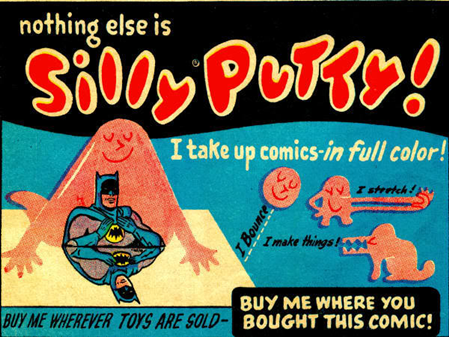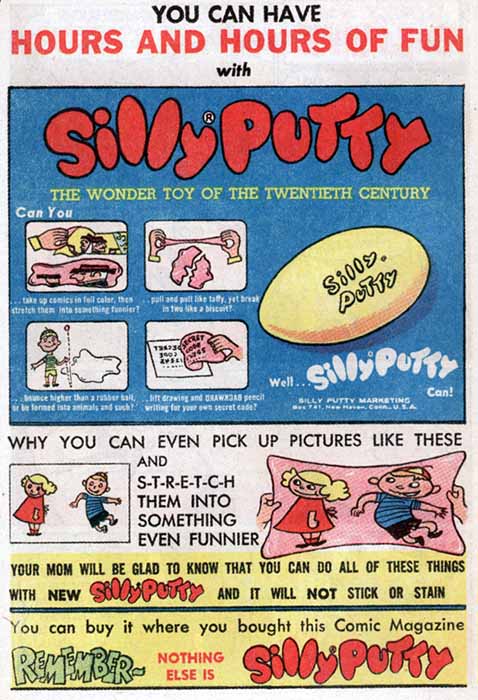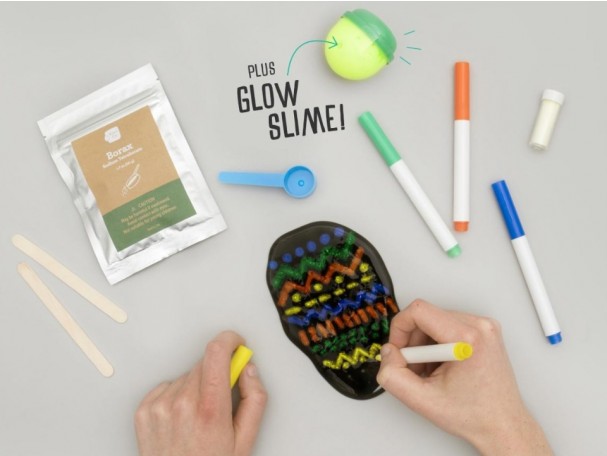
Here’s the story of how Silly Putty came to be:
Back in World War II, rubber was very precious. It was important for making all kinds of important things to fight a war, including rafts, tires, parts for cars and airplanes, gas masks, and boots. So the United States government was trying to find a way to make rubber in a factory (rather than harvesting it from rubber trees).
Engineer James Wright was one of the people trying to solve this problem, which is when he invented Silly Putty by mixing boric acid into silicone oil. The substance wasn’t close enough to real rubber to replace it, so the government wasn’t interested. But a man named Peter Hodgson saw that it might be good as a toy.
Since then, Silly Putty has taken off! It became so popular that astronauts even took it on the Apollo 8 moon mission to secure their tools in zero-gravity.

Here are some more cool facts about Silly Putty:
- In 1989, a graduate student at Alfred University dropped a 100-pound ball of Silly Putty from the roof of the Engineering Building to see what would happen: Would it bounce, break, or just flatten out like a giant wad of chewing gum? It bounced about eight feet into the air, and then shattered when it hit the ground the second time!
- When Silly Putty is microwaved for about 3 minutes, it becomes very sticky. However, when cooled the putty returns to the same state it was in before.
- It’s flammable and when lit, the flame is a very bright white. Though it burns slowly, the leftover ash from the putty crumbles very easily.
Silly Putty and slime are not quite the same thing, but if you’d like to try your hand at inventing something cool (and gooey!) of your own, check out our Chalkboard & Glow Slime project!

